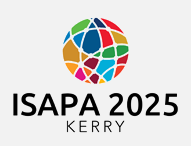Start Date
18-6-2025 9:00 AM
End Date
18-6-2025 10:30 AM
Abstract
Students with blindness and visual impairment (BVI) face significant barriers to participation as well as social exclusion in inclusive schools, particularly in Physical Education (PE) (Haegele et al., 2021). As a result, many are prompted to transfer to specialized schools in order to continue their education (Giese, 2021). However, the dynamics of how participation and social hierarchies are negotiated in specialized PE remain largely unexplored.
To address this gap, we conducted individual and group interviews during participant-led school tours, we gathered insights from 19 students with BVI (aged 14-21, 12 female) and three sighted PE teachers (2 female) at an Austrian school specializing in BVI.
Against the background of a cultural model of disability and ableism theory (Campbell, 2009), we conducted thematic analysis (Braun & Clark, 2012), identifying three key themes: Firstly, by contrasting BVI with sightedness as a social norm, students and teachers constructed their specialized school as a secluded space, equally characterized by paterinalistic protection and notions of alternative normalities. Secondly, they reinforced sub-divides within ability regimes based on the hierarchization of various degrees of BVI. Thereby, stereotpyes of blind individuals as overly dependent are being reproduced. Thirdly, teachers maintained hierarchies of ascribed cognitive development among students by exhibiting tendencies to infantilize them, which prompted students to criticize PE's lack of age-appropriate activities.
These findings shed light on the intricate dynamics of social exclusion as well as opportunities to improve BVI students’ participation in PE and beyond.
References
Braun, V., & Clarke, V. (2012). Thematic analysis. In H. Cooper, P. M. Camic, D. L. Long, A. T. Panter, D. Rindskopf, & K. J. Sher (Eds.), APA handbook of research methods in psychology, Vol 2: Research designs: Quantitative, qualitative, neuropsychological, and biological. (pp. 57–71). American Psychological Association. https://doi.org/10.1037/13620-004
Campbell, F. K. (2009). Contours of ableism: The production of disability and abledness. Palgrave Macmillan.
Giese, M. (2021). Subjektive Konstruktionen von Teilhabebarrieren im inklusiven Sportunterricht von blinden und sehbeeinträchtigten SchülerInnen. Zeitschrift für sportpädagogische Forschung, 9(2), 6–23. https://doi.org/10.5771/2196-5218-2021-2-6
Haegele, J. A., Kirk, T. N., Holland, S. K., & Zhu, X. (2021). ‘The rest of the time I would just stand there and look stupid’: Access in integrated physical education among adults with visual impairments. Sport, Education and Society, 26(8), 862–874. https://doi.org/10.1080/13573322.2020.1805425
Recommended Citation
Giese, Martin; Höger, Brigitta; and Meier, Stefan, "Safe Spaces or Enclaves? Negotiating Social Hierarchies in Specialized PE for Students with VI" (2025). International Symposium of Adapted Physical Activity and International Symposium on Physical Activity and Visual Impairment and Deafblindness. 8.
https://sword.mtu.ie/isapa/2025/day3/8
Safe Spaces or Enclaves? Negotiating Social Hierarchies in Specialized PE for Students with VI
Students with blindness and visual impairment (BVI) face significant barriers to participation as well as social exclusion in inclusive schools, particularly in Physical Education (PE) (Haegele et al., 2021). As a result, many are prompted to transfer to specialized schools in order to continue their education (Giese, 2021). However, the dynamics of how participation and social hierarchies are negotiated in specialized PE remain largely unexplored.
To address this gap, we conducted individual and group interviews during participant-led school tours, we gathered insights from 19 students with BVI (aged 14-21, 12 female) and three sighted PE teachers (2 female) at an Austrian school specializing in BVI.
Against the background of a cultural model of disability and ableism theory (Campbell, 2009), we conducted thematic analysis (Braun & Clark, 2012), identifying three key themes: Firstly, by contrasting BVI with sightedness as a social norm, students and teachers constructed their specialized school as a secluded space, equally characterized by paterinalistic protection and notions of alternative normalities. Secondly, they reinforced sub-divides within ability regimes based on the hierarchization of various degrees of BVI. Thereby, stereotpyes of blind individuals as overly dependent are being reproduced. Thirdly, teachers maintained hierarchies of ascribed cognitive development among students by exhibiting tendencies to infantilize them, which prompted students to criticize PE's lack of age-appropriate activities.
These findings shed light on the intricate dynamics of social exclusion as well as opportunities to improve BVI students’ participation in PE and beyond.
References
Braun, V., & Clarke, V. (2012). Thematic analysis. In H. Cooper, P. M. Camic, D. L. Long, A. T. Panter, D. Rindskopf, & K. J. Sher (Eds.), APA handbook of research methods in psychology, Vol 2: Research designs: Quantitative, qualitative, neuropsychological, and biological. (pp. 57–71). American Psychological Association. https://doi.org/10.1037/13620-004
Campbell, F. K. (2009). Contours of ableism: The production of disability and abledness. Palgrave Macmillan.
Giese, M. (2021). Subjektive Konstruktionen von Teilhabebarrieren im inklusiven Sportunterricht von blinden und sehbeeinträchtigten SchülerInnen. Zeitschrift für sportpädagogische Forschung, 9(2), 6–23. https://doi.org/10.5771/2196-5218-2021-2-6
Haegele, J. A., Kirk, T. N., Holland, S. K., & Zhu, X. (2021). ‘The rest of the time I would just stand there and look stupid’: Access in integrated physical education among adults with visual impairments. Sport, Education and Society, 26(8), 862–874. https://doi.org/10.1080/13573322.2020.1805425

